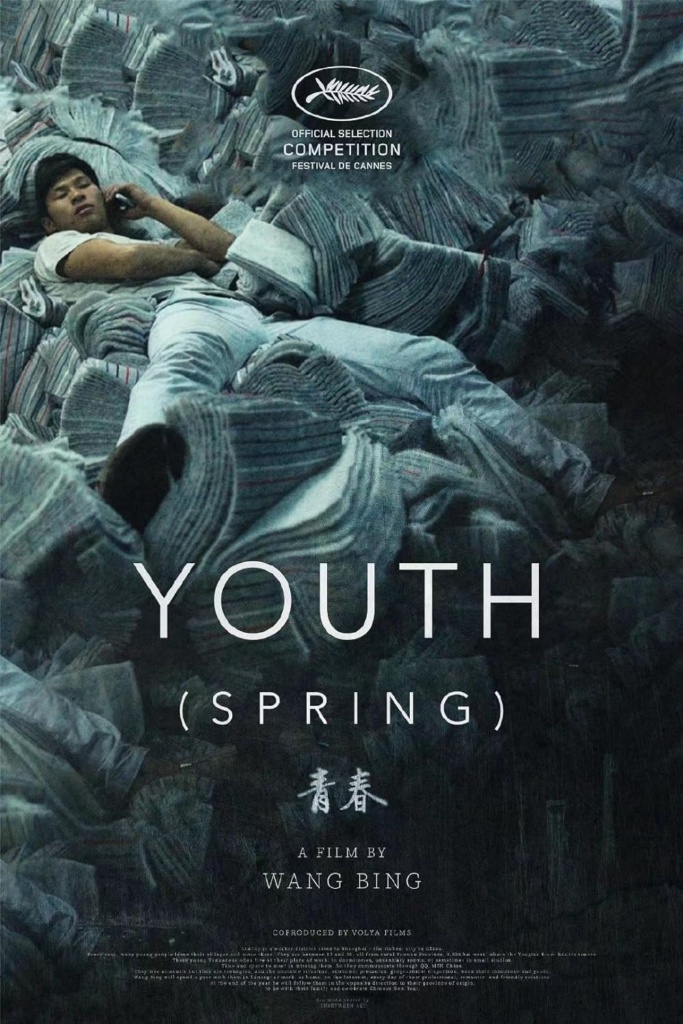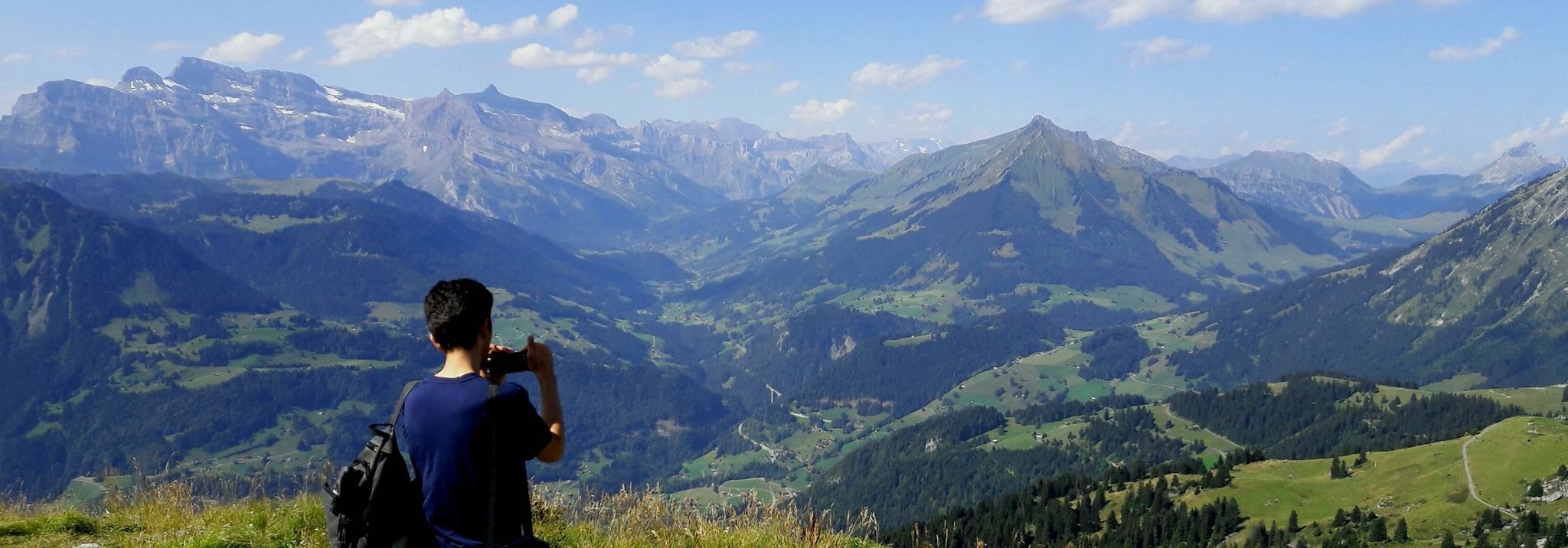
Technological Exploration of Documentary Cinema: Contrasting “Youth (Spring)” and “Knit’s Island”
- Introduction and Personal Experience
During film festivals, attendees often find themselves rushing from one screening to another, hoping to catch the most spectacular films of the year. Amidst such rushes, I watched two movies at the 2024 Luxembourg Film Festival that captured my attention as examples of exceptional cinematic experiences. I was not sure if I was enjoying the fact that I’m watching these films or not. At times, I questioned why one should watch them, yet I found myself unable to leave the hall – something compelled me to watch until the end. In the final sequences of both films, I realised that my perception of reality had shifted during each screening, and this is what makes them interesting. These experiences prompted me to reflect also about if the old-school observational style in long takes is still up to date next to the new-age technologies, and this is what we’re going to discuss in this article.
2. Simple structure and complex ideation behind the “Youth (Spring)”
The poetic observational documentary “Youth (Spring)” by Chinese filmmaker Wang Bing was shot between 2014 and 2029, the runtime is 212 minutes, and it simply shows the daily life of young people working in an industrial region of clothes production. The simpler is the syntax of the visual narrative, the more complex is the idea behind it.
Through observational shooting and simply editing the long shots without too much intervention, the director clearly reaches his goal – to make the audience become a part of these people. The area of factories that don’t correspond to the modern standards of privacy, business ethics, healthy lifestyle and many other important for us stuff transforms into a laboratory of life. In other words, though young people are coming here to earn money to build their future, they also share each other’s life and wisdom, they play, flirt, create or terminate relationships. In other words, they come here to collect money, but they also collect some skills, knowledge, dreams, and people for the rest of their lives. This transformation is invisible – one can never understand when it started or happened, just the feeling stays in the unconscious level. Probably this is the reason why in the announcements of the LuxFilmFest Wang Bing is presented as China’s poet of observation.
There is another contradictory element in “Youth (Spring)” and it’s about the dreams of the young generation. One of the girls tells his co-worker that they can’t get into a relationship as her family expects her to marry a boy from a rich family to help their economic predicaments. This kind of talk that appears in different parts of the film seems to be just simple and honest conversations, nothing more. But in fact, those create an emotional windmill inside the viewer. Particularly, the viewer, on the level of the brain and heart, starts to perceive different information and becomes confused – are these people happy, is there any chance their dreams will come true, what’s the aim of their life? Subsequently, these thoughts and feelings slide onto another level – what’s the difference between the life of those protagonists and ours, the viewers, by and large․․․ Are we, the viewers happy, what were our dreams and what happened with those, what’s the aim of our lives.
3. Technological Exploration: Contrasting “Youth (Spring)” and “Knit’s Island”
Reaching this emotional impact through simple real-life filming techniques is the point where the documentary “Youth (Spring)” contradicts another documentary presented at the LuxFilmFest. The directors of both films aim to document human souls by visualising (materialising) their feelings. This can be considered one of the most essential missions of documentary cinema. Both films managed to reach this level by totally different artistic and technical means.
In “Youth (Spring)”, which is a co-production between France, Luxembourg and Netherlands, the characters appear in front of the camera physically, which can create a need to “act themselves”, in other words- to make efforts to look natural. In another documentary included in the festival program, “Knit’s Island” made by Ekiem Barbier, Guilhem Causse, Quentin L’Helgouac’h, the protagonists seem to be more secure in showing their honest thoughts and feelings, emotions, and beliefs as physically they’re invisible, also because they don’t see a camera. In a game environment – a virtual world where almost all the film is made, they’re allowed to do whatever they feel like, so they will not be punished for anything they do.
From the above-mentioned point of view, this French film-experiment has an important role in documentary film history to showcase an additional method of reaching honesty and open talks in front of the screen without having a feeling that someone is filming you. It’s interesting that the same team of French filmmakers – Ekiem Barbier, Guilhem Causse and Quentin L’Helgouac’h in 2018 made a 34-minute documentary called “Marlowe Drive” that is entirely shot within the game GTA V using the camera angles in Director’s mode. This can be one of the reasons how the film crew acts so professionally in a virtual environment. Another important thing to explain it is that the crew spent 963 hours in the DayZ game environment where the story is developing.
Even though the presence of the camera in front of protagonists we call a contradictory point in these 2 films, but both films are valuable for exactly what they gained – in “Knit’s Island” the point of view and judgments are not hidden and human characters are transparent. In “Youth (Spring)” the viewer needs to rethink if there’s something hidden behind those simple actions of characters.
In both films, the protagonists of stories are the generalised characters. In one case it’s the young person working in Zhili – one of the textile industry centers in China, and the other is the human of civilised world trying to actualise their imagination of possible ideal life in the virtual world. And both are static characters – the aim of the films is not to show the change of protagonists during the film but to make the audience feel their environment and reality.
While we spoke about the technical realisation of the “Knit’s Island” movie, it’s important also to mention the specific way of filming “Youth (Spring)”. During the same Q&A session that followed the LuxFilmFest screening of the film, Wang Bing informed that he made the film with a tiny camera and the sound is taken from the camera only. This is an important factor for the documentary, and it aims to reach the level of what we were discussing about the film “Knit’s Island” – to minimalise the feeling that someone is following you in order to retell your story and show your actions to others.

4. Societal Interconnected Narratives and Characterization
Both films are about people who try to live their lives in the way they want. The difference is that in the case of “Youth (Spring)” young protagonists have some hopes about their future and they work to collect money for those aspirations. The protagonists of “Knit’s Island” are more adults and they have no hope of changing anything in their real life in the future to the better side, therefore they’re settling into the virtual reality that they can form in the way they want. They can even be considered continuation of one another – young people, who have dreams, usually end up adapting to what they have and finding (escaping) ways to survive the reality they haven’t dreamt about.
5. Ethical Considerations in Documentary Filmmaking
In both films we can see ethical considerations that generally should be important for any documentarian. In the film “Knit’s Island” we can see how the filming group by meeting new people asks permission to record and use the recording (particularly the real voices of players) for their documentary film. In the film “Youth (Spring)”, we can see the presence of the observational camera in the lives of the characters, capturing both personal and business insights of the people around. This means that the camera didn’t try to hide which is admirable from the ethical point of view.
The same thing can also be misleading from the point of view of credibility. It’s difficult to believe that the film is a true documentary while the protagonists are so open in front of the camera which is in the center of actions. Only after knowing that the film was made within 5 years – from 2014 to 2019 – it becomes clear that this is not a pseudօ-documentary. The long-term shooting technique can achieve such a result as people get used to the presence of the camera.

6. Film Length and Emotional Effect
The length of the films can be considered as another aspect of ethical implications as it has a direct influence on the emotions of the viewer and also it’s about asking one of the most valuable resources nowadays – the time. In the case of “Youth (Spring)” during the film it’s not very clear why it’s 212 minutes and gives an impression of a loop or a static action. On the other hand, we’re speaking about a poetic documentary which means we can’t discuss it in the same way as we can’t say that the poems of Dante Alighieri or Homer could be shorter. Only at the end of the movie “Youth (Spring)” we can understand the influence of the long and repetitive work-related sequences. After 3 hours of watching and becoming a part of the working environment, the home village environment of one of the workers seems to be uncomfortable both for the protagonists and the viewer. In other words, this freedom feels like a deadlock of uncertainty and lack of possibilities, while the workplace was also had the same feeling of deadlock for young workers but in a happier mood.
Continuing the topic of the length and the emotional influence, here it’s worthy to note that the film “Knit’s Island” reached to the same level of sub-conscious impact in 2 times less length – 96 minutes. Particularly, after watching on a 2D screen the film shot in virtual reality, at the end the few shots from the outdoor real-world environment appear strange to our brains. So, at the end of the film, we can experience what gamers feel when they switch off their game – they’re back to a stranger world that is not as comfortable and welcoming as the virtual one.
7. Conclusion: Reflections on Documentary Cinema’s Evolution
In conclusion, the juxtaposition of “Youth (Spring)” and “Knit’s Island” within the 15th edition of the Luxembourg Film Festival provides audiences with a valuable opportunity to appreciate the diverse and creative richness within documentary cinema. These films, along with others featured in the festival, serve as a reminder that despite the emergence of new creative approaches facilitated by technological advancements in documenting human emotions and thoughts, traditional documentary methods remain highly relevant. The unique storytelling methods employed by both documentaries underscore the versatility of the documentary in conveying powerful narratives. While “Youth (Spring)” immerses viewers in the daily lives of young individuals working in an industrial region, prompting reconsiderations about societal norms and personal aspirations, “Knit’s Island” leverages virtual reality as a canvas for exploring the unfiltered thoughts and emotions of its characters, offering an alternative yet equally compelling perspective. The festival’s curation encourages audiences to embrace the diversity of cinematic expression, fostering a deeper appreciation for the profound impact that documentary films can have on our understanding of the world and ourselves in the middle of evolving cinematic landscapes.
Seg Kirakossian
PhD researcher in Documentary film aesthetics at the University of Luxembourg

